Master Pool Maintenance: Essential Sand Filter Backwashing Tips
February 11th, 2024
February 11th, 2024
Few delights compare to the sparkling allure of a pristine pool on a sunlit day. However, maintaining this glistening oasis often requires vigilant care and attention, particularly when it comes to the sand filter—a true workhorse in pool maintenance. This understated hero quietly ensures that your swimming pool remains a sanctuary of cleanliness and clarity, filtering out impurities and debris. Yet, like any diligent worker, it can become bogged down over time, losing its efficiency.
Years ago, I faced the daunting task of restoring my backyard pool to its former glory. After skimming the surface and adjusting chemical levels to no avail, I discovered the root of the problem: an overburdened sand filter. It dawned on me that backwashing was the key to restoring its functionality. This revelation transformed my pool maintenance routine, making it as sparkling as the summer sun reflected off the water.
Knowing when and how to backwash the sand filter is crucial. You’ll save time and money while extending the life of your pool equipment. We’ll explore the steps needed to effectively backwash your sand filter, turning pool care from a chore into a simple, rewarding task. Whether you’re a seasoned pool owner or a new guardian of this watery haven, mastering this technique is a surefire way to enjoy an immaculate pool season after season.
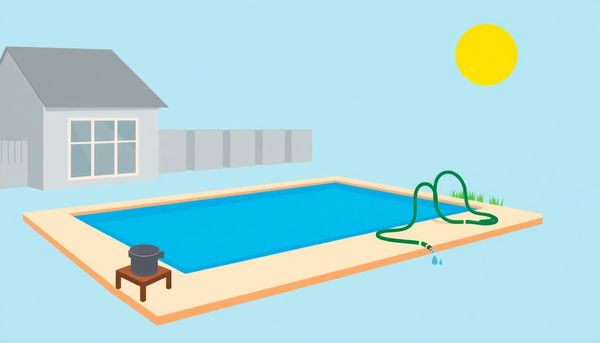
There's something quite satisfying about mastering a task that keeps your pool sparkling clean, and backwashing a sand filter is one of those essential rites of passage. This task involves reversing the water flow through your filter to flush out the debris it has collected. Think of it as giving your filter a fresh start. When I first learned how to backwash my own pool filter, I was amazed at the simplicity of the process, yet the profound impact it had on keeping my pool pristine.
To begin, ensure your pool's water level is slightly above the midway point of your skimmer. This prevents unwanted air from entering the system during backwashing. Attach your backwash hose securely to the waste port—trust me, nothing’s more annoying than a loose hose spraying water everywhere! With the pump off, turn the multiport valve to the backwash setting. This valve is crucial, as moving it while the pump is running can damage the system.
Once everything is set, turn the pump back on and let it run for about two minutes or until the water in the sight glass appears clear. This visual cue is your sign that most of the trapped debris has been expelled. Afterward, switch the valve to rinse for about 30 seconds to reposition the sand properly. Finally, turn off the pump, reset the valve to the filter position, and you’re back in business. The whole process is a little dance of valves and hoses that soon becomes second nature, ensuring your pool remains the inviting oasis it was meant to be.
Keeping your pool filter in top shape is like maintaining the unsung hero of your backyard oasis. So, when should you roll up your sleeves and backwash that sand filter? The answer lies in a careful balance between cleanliness and efficiency.
First, get acquainted with your pool pressure gauge. After a thorough backwash, note the baseline pressure reading, which serves as your starting point. As your filter traps debris, the pressure will rise. Once it climbs 10 PSI above that baseline, it's time to spring into action. Overlooking this can lead to reduced water flow from your return jets and murkier pool water.
Seasonal changes and pool usage also play crucial roles. After a thunderous storm or a lively pool party, your filter might be working overtime to clear the excess debris, requiring an earlier backwash. Algae outbreaks or the use of pool flocculants demand more frequent attention too, as they can swiftly clog the sand medium.
But don’t rush to backwash at every whim. A slightly dirty filter can actually improve filtration by capturing finer particles. The key is to avoid waiting until it’s clogged, which stresses the system. Keeping an eye on these factors ensures the filter operates efficiently, sparing you the hassle of frequent maintenance and offering you more time to enjoy your pool.
When it comes to maintaining that pristine pool sparkle, executing the backwashing steps correctly is crucial. Imagine it’s a Saturday morning, and you notice your pool isn't as inviting as usual. The water seems murky, and your filter’s pressure gauge is reading higher than normal. Time to roll up those sleeves and give your sand filter a much-needed backwash!
To begin, ensure your pump is turned off to prevent any damage. Safety first, right? Next, attach your backwash hose to the waste port—this will channel the dirty water away from your pool area. Twist the multiport valve to the backwash setting. Now, switch the pump on and observe as water flows backwards through the filter, flushing out the accumulated debris. Keep an eye on the sight glass or hose end, and continue backwashing until the water runs clear—typically a couple of minutes.
Afterwards, turn the pump off again and set the valve to rinse. This step is often overlooked, but it’s essential for re-settling the sand and preventing leftover debris from sneaking back into your pool. Run the pump on the rinse setting for about 30 seconds to one minute.
Finally, return the valve to the filter setting, switch the pump back on, and breathe a sigh of relief. Your filter is now ready to take on the next wave of particles. Remember, frequent backwashing isn't always beneficial; a slightly dirty filter can actually trap smaller impurities more effectively. But when it’s time, these steps will ensure your pool is crystal-clear, ready for that much-deserved swim.
Caring for your sand filter ensures your pool sparkles like a summer gem. Keeping the filter in top shape means understanding the balance between cleanliness and a bit of grit. Contrary to what you might think, a slightly dirty filter isn’t a bad thing. It acts as an additional layer, capturing those finer particles that might otherwise escape notice. However, let it breathe too long, and the performance plummets, causing murky waters and uninspiring pool days.
Start by monitoring the pressure gauge vigilantly. A reading that jumps 10 PSI over your usual level signifies a filter in need of backwashing. Think of PSI as your pool's way of whispering for attention. This rise often coincides with sluggish water flow from the return jets, signaling debris clogging the filter medium.
But it’s not just pressure – visual cues are equally telling. Water clarity is a prime indicator; if the pool starts resembling a soup more than a crystal-clear oasis, action is necessary. Post-storm shenanigans or post-flocculant usage? Absolutely backwash. But remember, it’s about moderation. Backwashing too frequently removes beneficial, fine-layer build-up.
Lastly, don't forget the essentials: a sturdy backwash hose and ensuring the pool's water level can afford the process. Equip yourself with these insights and tools to maintain optimal filter function, and your pool will remain the envy of every summer gathering.
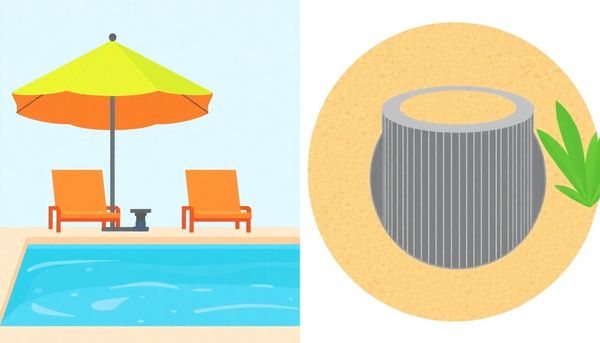
Clearing debris from your pool is akin to sweeping away the remnants of a satisfying gathering, ensuring your next swim is as refreshing as a cool breeze. It starts with a simple tool: the skimmer net. This trusty companion glides across the surface, scooping up leaves and floating nuisances with ease. For those stubborn particles lurking below, a manual vacuum becomes the hero of the hour, diving deep to capture what the skimmer might miss.
But it’s not just about skimming and vacuuming; timing plays a crucial role too. After a storm or an algae treatment, debris can accumulate quickly, overwhelming your filter. This is when your backwashing routine becomes invaluable. By reversing the water flow through the sand filter, backwashing removes the accumulated debris, restoring your system’s efficiency. However, it’s essential to keep an eye on your pressure gauge. If it reads 10 PSI above normal, it signals that your filter is working overtime and needs attention.
While backwashing is vital, remember not to overdo it. A slightly dirty filter can trap tinier particles more effectively than an immaculately clean one. Yet, when the pool seems murky or jets lose their vigor, it’s time to act decisively. Lastly, think of backwashing as part of a holistic pool care regimen. Like tending a garden, regular maintenance keeps your oasis inviting and crystal-clear.
Navigating the backwashing process requires a touch of timing and technique. Think of it as giving your pool’s sand filter a rejuvenating cleanse. At the heart of this ritual is the pressure gauge, your reliable guide in determining when it's time to roll out the backwash hose. Imagine glancing at the gauge to find it 10 PSI above its usual reading—this is your cue to begin. As you unravel the hose, make sure your pool’s water is at an adequate level, as backwashing will cause some water loss.
With everything set, it’s crucial to first switch off your filter. This step can't be skipped, as moving the valve while the system is running can damage the essential gaskets. Once off, turn the valve to the backwash setting, and then power up again. The water starts to flow in reverse through the filter, flushing out accumulated debris and dirt into the waste port. Keep watch over the clarity of the outgoing water; as soon as it clears, it’s time to stop.
The final step is a quick switch to the rinse mode, which resets the sand in your filter. Running the rinse for about 30 seconds ensures all trapped residue is flushed out, preventing unwanted sand from sneaking back into your pool. Remember, timing and precision in each step safeguard your pool's health and maintain its sparkling allure.
Determining the perfect moment to backwash your sand filter is like mastering the art of timing. It’s not as simple as setting a calendar reminder; it involves a keen awareness of your pool’s unique rhythm. I remember the first time I dealt with this, I was simply reacting to a greenish tint in the water, not realizing that subtle signs had been there all along.
Regular monitoring of your filter's pressure gauge is crucial. Typically, a rise of 10 PSI above normal indicates it's time to act. At the start, note your filter's baseline pressure right after backwashing. This number serves as your reference point. However, don’t rush to backwash at the first hint of increased pressure. A slightly dirty filter can actually trap smaller particles, enhancing the clarity of your pool water.
Visual cues can also guide you. If the water flow from your return jets seems weaker than usual, or your pool water looks cloudy, these could be signs your filter needs attention. In my own pool, after a particularly blustery storm, the jets’ reduced flow was my first hint that debris was clogging the system.
Lastly, consider recent pool activities. After using a flocculant or vacuuming post-storm, backwashing is often necessary. By tuning into these indicators, you can maintain your pool's sparkle without unnecessary water waste.
Tucked away in the depths of your pool filter is a hidden battleground where sand and debris clash in a relentless struggle. The sand filter, your pool’s unsung hero, works tirelessly to keep your water shimmering under the summer sun. However, even heroes need a little help to perform at their best. Preventing filter clogging is essential to maintaining this balance and ensuring your pool remains a pristine oasis.
A clogged filter isn't just a minor inconvenience; it can lead to a series of cascading problems. One day, I noticed my pool water looking murky, not its usual sparkling self. A quick glance at the pressure gauge showed a reading well above normal. Sure enough, my sand filter was due for a backwash. Just like that, my pool was back to its inviting blue, demonstrating how vital it is to monitor those pressure readings and act accordingly.
Regular backwashing is crucial, but timing is everything. It’s not just about routine; it's about observing symptoms. Low water flow, higher PSI readings, or cloudy water are all signs screaming for attention. Backwashing when your filter is struggling ensures it doesn't become overwhelmed with debris, allowing it to operate efficiently. Remember, maintaining a slightly dirty filter is optimal for capturing smaller particles, but push it too far and it backfires—literally. By keeping an eye on these signs and maintaining a scheduled backwash routine, you keep your filter healthy and your pool gleaming.
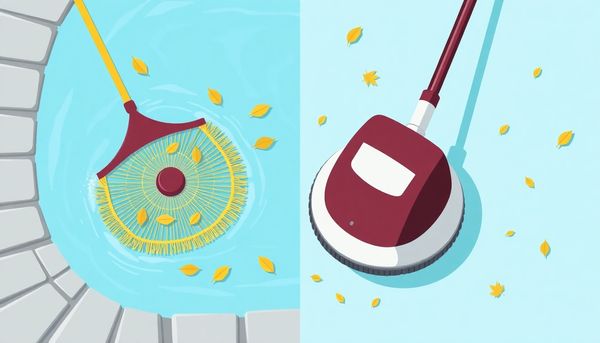
Maximizing the performance of your sand filter is akin to fine-tuning an orchestra; every element must work in harmony for the best result. Start by keeping an eye on the pressure gauge—your filter’s heartbeat. When it ticks more than 10 PSI above its norm, it's a strong signal that the filter needs a breather. Regularly monitoring and adjusting according to these readings can prevent overburdening the filter, ensuring it operates at peak efficiency.
Another key to optimizing performance lies in the backwashing frequency. While it's tempting to backwash often, a slightly dirty filter can actually trap finer particles more effectively than a pristine one. Striking a balance is crucial. If excessive backwashing becomes a habit, not only is water wasted, but the sand's ability to filter is compromised. Reserve frequent backwashing for post-heavy debris events, like after a storm or an algae treatment.
Visual checks also play a role; cloudy water or diminished flow from the return jets often hints at underlying issues. Address these promptly to maintain clear water. Additionally, consider the sand's age. Just as bread loses freshness over time, sand loses its edge after a few years. Changing it every three to five years keeps filtration efficient and the pool sparkling.
Finally, don’t overlook the laterals at the filter's base. Inspect these periodically for breaks as they ensure even water distribution through the sand. With these practices, your filter will not only work harder but smarter, delivering a consistently clean pool.
Establishing a regular backwashing routine for your sand filter is akin to giving your pool a fresh breath of life. Every week, or as needed based on your pool's pressure gauge, a short session of backwashing can significantly enhance your pool's clarity. Picture this: after a weekend pool party, with kids splashing and sunscreen abounding, your filter has worked overtime to trap all that extra debris. By taking just a few minutes to backwash, you’re effectively resetting your system, ensuring it continues to function at peak performance.
Forget the guesswork about when to initiate this process. Start by noting the baseline pressure of your clean filter. Whenever the gauge nudges 10 PSI above this level, it’s backwash time. More frequent sessions might be necessary after a storm or heavy pool use. Trust me, I learned this the hard way after a summer storm left my pool murky and my filter struggling.
Each backwashing session follows a straightforward procedure. Switch off the pump, adjust your filter setting to 'backwash', and let it run until the expelled water is clear. A rinse cycle afterward ensures that any residual dirt is flushed out. Remember to keep an eye on your pool’s water level, as backwashing sends some water out of the system. By maintaining this routine, you’re not just prolonging your filter’s lifespan but also ensuring every dive is into crystal-clear waters.
Understanding the heartbeat of your pool’s filtration system starts with keeping an eye on that trusty pressure gauge. Just like listening to your car’s engine for odd noises, monitoring the filter pressure offers early warnings of when your filter needs attention. The gauge, often overlooked, is your first line of defense against murky waters and inefficient filtration. When the needle creeps above 10 PSI from your established baseline, it's a clear sign that the filter is struggling and needs backwashing.
Think back to the last heavy rainstorm or that time the kids had a sandcastle contest by the pool. Both scenarios likely introduced an avalanche of debris into your water, demanding more work from your filter. After such events, checking the pressure gauge becomes critical. If the pressure reads high, it suggests your filter is packed with all sorts of unwelcome guests, from sand to leaves, and it’s time for a clean-out.
Avoid the temptation to backwash too often, though. A bit of grit in the filter can actually help trap finer particles, making your pool sparkle even more. However, ignoring the pressure gauge could lead to major clogs and an overworked pump. So, keep your eyes on that needle, ensuring your pool remains a place of relaxation and fun, not frustration. Regular checks can save you from unexpected surprises and keep your maintenance routine smooth and effective.
Backwashing your sand filter sounds straightforward, yet it can sometimes feel like wrestling with a stubborn garden hose. Overflowing filters, unexpected leaks, or mystery pressure spikes can interrupt what should be a seamless maintenance task. Let's explore how to tackle these common hiccups effectively.
Firstly, if you spot water leaking from your backwash hose connection, double-check whether the hose is securely fastened to the waste port. A loose connection might lead to unwanted water loss and a wet cleanup. If the hose appears worn or damaged, consider replacing it to prevent future issues.
Another frequent challenge arises when the filter pressure refuses to drop after backwashing. This could indicate that your sand has become so heavily compacted or greasy that backwashing alone isn’t enough. In such cases, it might be time for a sand change. A good rule of thumb is to replace the sand every three to five years to maintain optimal filter performance.
Clogged laterals might also play a role in persistent pressure problems. The laterals, those crucial parts at the bottom of your filter, can crack or clog over time, diminishing filtration efficiency. Inspect these components if you continue to experience poor water clarity or stubborn pressure readings.
Finally, remember that too frequent backwashing can be counterproductive. Allowing a bit of debris to remain helps capture finer particles, so striking the right balance is essential. Through understanding and troubleshooting these issues, your pool can stay clear, and you can enjoy a splash-worthy summer.
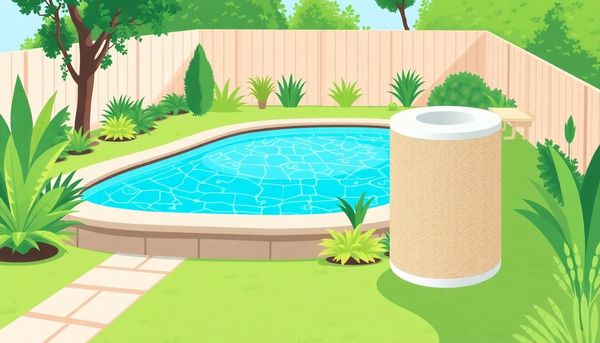
Safeguarding the longevity of your sand filter is crucial, and preventing damage is key to maintaining its efficiency. It’s like nurturing a garden; you wouldn't overwater your plants, nor should you overdo the maintenance of your filter. Understanding when and how to backwash is vital, but equally important is knowing what not to do.
First, avoid moving the multiport valve handle while the system is running. This common mistake can cause serious wear on the valve gasket, akin to trying to change gears in a moving car without engaging the clutch. Always ensure the pump is switched off before adjusting any settings on the filter.
Additionally, while it might be tempting to backwash frequently for that pristine pool look, moderation is essential. A slight buildup of dirt in your filter can actually enhance the filtration process by trapping finer particles. Thus, only backwash when necessary—typically when the pressure gauge indicates a 10 PSI increase from the baseline or the water flow appears weakened.
Keep an eye on the sand’s condition every few years. If it becomes clumped or greasy, it’s time for a replacement. Lastly, remember that rinsing after backwashing is not just a polite gesture to your pool—it’s a necessity. This step ensures that loose particles don't find their way back into your swimming sanctuary. Treat your filter with care, and it will return the favor with years of clear, sparkling water.
In the world of pool maintenance, backwashing a sand filter is akin to giving your pool a refreshing detox. It's all about keeping things running smoothly by reversing the flow of water through the filter to flush out unwanted debris. To begin, ensure your pool pump is turned off to prevent any unwelcome surprises. Then, twist your multiport valve to the backwash setting. This step is crucial because moving the valve while the pump is on can damage the equipment, leading to costly repairs.
Once set, power up the pump and watch as the water rushes through the waste line, carrying with it the dirt that has overstayed its welcome. Keep an eye on the sight glass, if your system has one, or simply track the clarity of the water exiting the waste hose. When it runs clear, you know the muck has been evicted. Afterward, switch the valve to the rinse setting. This move is often overlooked, yet it's essential as it settles the sand back into place, ensuring optimal filtration once again.
Rinsing should last about 30 seconds to a minute. Finally, return the valve to the filter setting and restart the pump. It's worth mentioning, especially after a storm or heavy use, that more frequent backwashing might be necessary. Just like with any routine, finding the right balance is key. Too much backwashing can also waste water and resources, so only do it when needed.
Keeping an eye on both pressure and water flow is akin to being a vigilant guardian over your pool's well-being. When I first set up my pool, I learned the importance of monitoring these aspects the hard way. My pool's return jets were barely pushing water back, and the clarity of my otherwise inviting pool water was turning murky. It turned out that the pressure in my sand filter had silently crept up beyond the safe threshold of 10 PSI above the baseline.
For those new to this, your filter's pressure gauge is an essential tool that tells you when it's time to act. After a fresh backwash, take note of the PSI reading as your baseline. Over time, as debris accumulates, you'll notice an increase. This is your signal. A rise in pressure is often accompanied by a noticeable drop in water flow, which directly impacts how effectively your pool is being cleaned.
As you watch the numbers on your gauge, remember that a slight build-up isn't always your enemy. A modest amount of dirt can actually enhance filtration by catching finer particles. However, neglecting a significant hike can lead to a clogged system, rendering your pool filter inefficient. If recent storms or a spate of heavy use have added to your pool's burden, swift action is needed. Regular checks and timely backwashing ensure your pool remains a pristine oasis.
Amidst the splashes and laughter of poolside fun, it's easy to overlook the unsung hero of pool maintenance: the humble sand filter. Like any piece of equipment, your sand filter craves regular attention to function optimally. Think of maintenance checks as a health check-up for your pool's filtration system. By setting a routine, you can preemptively tackle minor issues before they snowball into costly repairs.
Consider a scenario where your pool party plans are disrupted by cloudy water or an unexpectedly sluggish flow from the jets. Regular maintenance can prevent such surprises. Make it a habit to examine the pressure gauge weekly. A reading that creeps 10 PSI above the baseline signals it’s time to backwash. Moreover, calendar reminders can be your ally, nudging you to inspect the filter and other components monthly.
Friends of mine, who own a picturesque backyard pool, learned the hard way when they skipped a couple of maintenance checks. Their filter sand was overdue for a change, leading to murky water and frustrated guests. Now, they swear by their maintenance routine, treating it as a small investment for uninterrupted enjoyment.
Beyond the routine, look out for telltale signs that your filter may need extra care. Unusual noises, persistent pressure issues, or reduced water clarity can indicate a need for more thorough examination. By keeping your finger on the pulse of your filter's performance, you ensure your pool remains a sparkling oasis ready for any occasion.
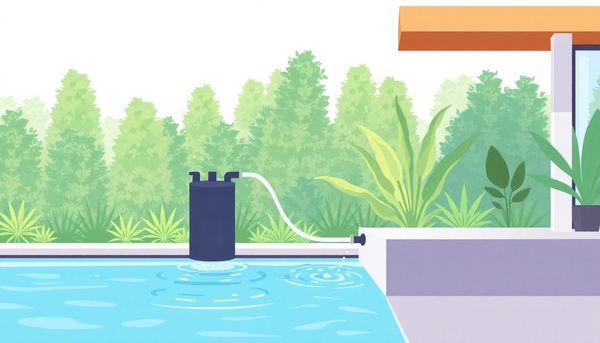
Navigating the signals from a pressure gauge on your sand filter can sometimes feel like deciphering a secret code. Yet, understanding these readings is crucial for maintaining a pristine pool. Every time you glance at the gauge, you're essentially getting a health check for your filter. Let’s break it down.
When you initially set up your sand filter or following a thorough backwash, take a moment to note the pressure reading. This number is your baseline or normal operating pressure. Think of it as the starting line in a race. Over time, as debris accumulates in the sand medium, the pressure will rise. A spike of 10 PSI above this baseline is your cue to backwash. It's much like when your car's dashboard lights up with a warning—ignore it at your peril.
For instance, after a particularly windy day when leaves and dust find their way into your pool, you might notice the water flow from the return jets isn’t as robust. That's your filter signaling that it's working harder than usual, and it's time to give it a break with a backwash. But be cautious: too-frequent backwashing is akin to over-washing your favorite jeans. A modest layer of dirt in the filter actually enhances its ability to trap finer particles.
Lastly, consider your pool’s recent history. If you’ve just battled an algae bloom or cleared away significant debris, expect that pressure gauge needle to climb faster, indicating another round of backwashing is in order. Keep these signals in mind, and your sand filter will reward you with crystal-clear water.
Spotting the moments when your sand filter cries out for backwashing is akin to tuning into the whispers of an old friend. It’s not merely about numbers on a gauge; it's about understanding your pool's unique dynamics. If you've recently entertained a whirlwind of guests or the sky has poured a storm's worth of debris into your pool, your filter's pressure gauge might rise faster than you’d expect. This isn’t just physics—it’s your filter waving a tiny flag, indicating it’s time for a backwash.
But numbers aren’t the only storytellers here. Observe the water flow from your return jets. A sluggish stream often signals a cry for help. Your once-clear pool water turning cloudy or debris floating lazily around like unwelcome guests can also suggest your filter isn’t pulling its weight. These are signs that your sand filter needs a fresh start.
In certain instances, faster action is required. After treating your water with a flocculant or dealing with an algae bloom, your filter bears the brunt of cleanup duty. In such cases, ignoring the need to backwash could lead to ineffective filtration or even damage. Recognizing these triggers isn't just about maintaining a pristine pool; it's about preserving the health of your filtration system, ensuring it continues to serve you well through many more sunlit swim sessions.
Tackling the task of backwashing might seem like a mundane chore, but it’s truly transformative for your pool’s health. As each day passes, your sand filter traps tiny particles, debris, and contaminants, ensuring the water remains pristine. However, the buildup can turn your once-efficient filter into a sluggish performer. The key to returning it to its glory lies in performing a thorough backwash.
Begin with the essentials: switch off your filter to avoid damaging its internal components. Next, attach a backwash hose to the waste port, ensuring it’s securely fastened. The goal is to redirect water flow, flushing out accumulated grime and restoring your filter’s efficiency. After setting the multiport valve to “Backwash,” power up the pump. Watch the sight glass or waste line, and continue until the expelled water transitions from murky to clear—this usually takes a couple of minutes.
But don’t stop there. Once the backwash cycle is complete, switch the valve to “Rinse.” This step is crucial to settle the sand back into place and prevent any dirt from sneaking back into the pool. Let it run for around 30 seconds, then turn everything off and reposition the valve to “Filter.”
Remember, backwashing is more than just a mechanical process; it’s about maintaining a sanctuary of sparkling water for those sun-soaked afternoons. With every cycle, you’re not just cleaning your filter, but ensuring the pool remains a source of joy, free of unwanted surprises.
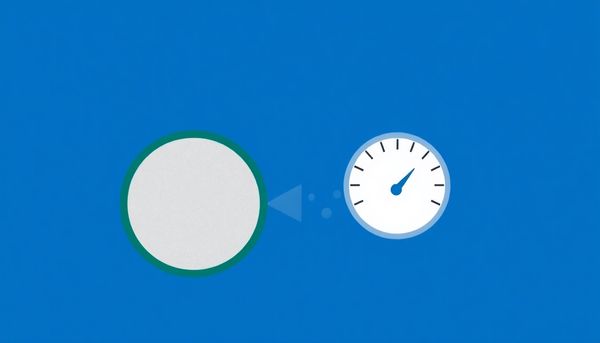
This article provided insights into maintaining your pool. Start your pool care journey today!
Want to become a pool maintenance expert? Our free Pool School course covers everything you need to know about pool care. From basic maintenance to advanced troubleshooting, you'll learn how to:
Join over 10,000 pool owners who have already transformed their pool care routine. Get started with our free Pool School course today!